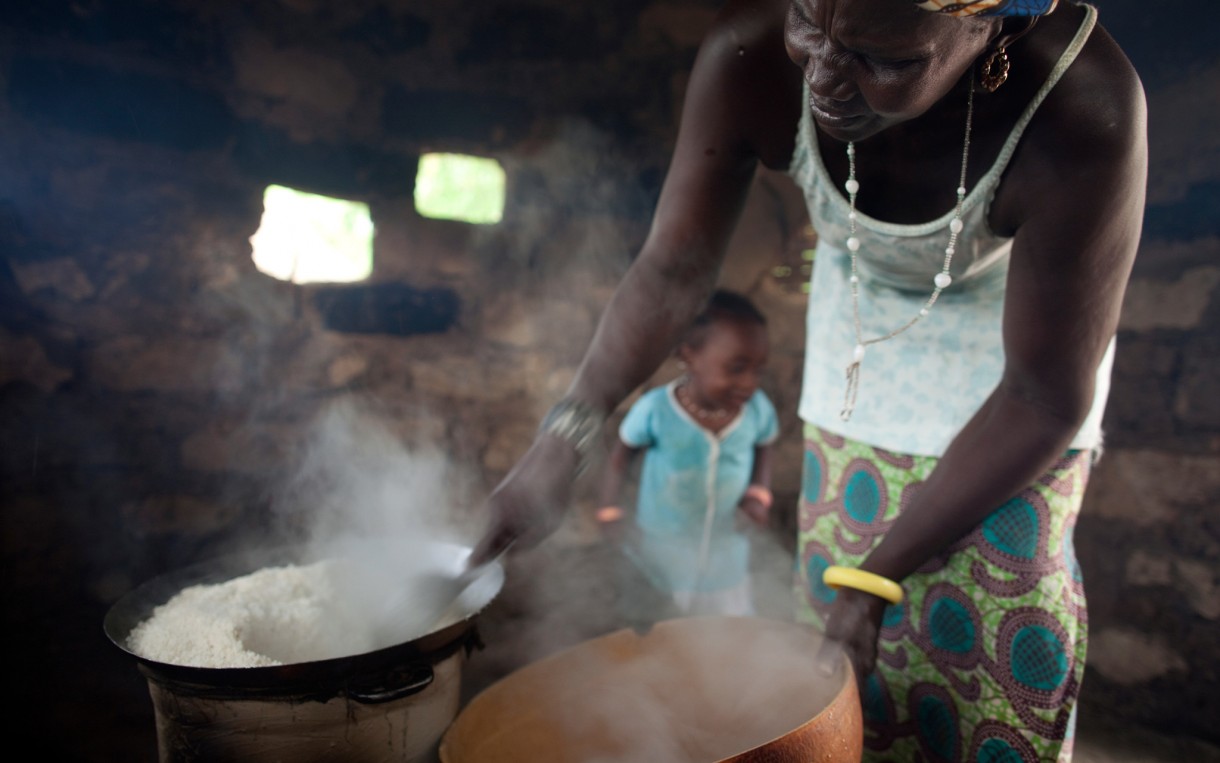Two, zero, 2030, 795 million, 70, 267 billion
 Karfa Mane prepares supper in the kitchen area of her home in Sare Dembara, Senegal, July 27, 2012. Photo: Holly Pickett / Oxfam America
Karfa Mane prepares supper in the kitchen area of her home in Sare Dembara, Senegal, July 27, 2012. Photo: Holly Pickett / Oxfam America
By the numbers: ending hunger and malnutrition.
TWO: Diplomats and politicians cheered when the UN General Assembly approved the Sustainable Development Goals (SDGs), now rebranded the #GlobalGoals, in New York two weeks ago. It was a tortured process with a complex result. There are 17 goals for humanity but goal number two is: “End hunger, achieve food security and improved nutrition, and promote sustainable agriculture.”
ZERO: Unlike past efforts around hunger, the goal this time is to end hunger. End it. Not reduce or halve it. End it. That’s incredibly powerful and is an achievement on par with ending slavery, or establishing equality for women. For all of human history, we have lived with hunger. Ending it is within our capacity, but is not easy. Much progress has been made in reducing hunger and poverty in the past 30 years. But we know that getting to the end will be harder, and different.

2030: The Global Goals run until 2030. In other words, we have 15 years to achieve this massive agenda. Really, that’s not much time, especially since we’re not exactly taking a running start. The world’s biggest industrialized democracies – the G7 countries – met in Germany last June to make a plan, but only got part way there. There’s no comprehensive plan, no money secured, and in some areas we’re not exactly sure what success even looks like. We need to get moving. Fast.
795 million: The truth is we barely know how many people are hungry and where they are. The best we have are estimates and projections. The UN Food and Agriculture Organization makes a periodic estimate of global under-nutrition. The current estimate is that 795 million are chronically undernourished. That’s only part of the challenge. Micronutrient deficiencies (“hidden hunger”) that seriously undermine health and development afflict as many 1-2 billion people in addition. The G7 committed to helping end hunger and malnutrition for 500 million people. Even if they come through, that still leaves more than a billion people who could be hungry and malnourished.
70: An estimated 70 percent of the world’s poorest people live in rural areas and depend on agriculture for their livelihood. These farmers are often neglected by politicians and governments, lack basic tools, technologies, infrastructure and know-how. They live on the front-lines of climate-change, depending on the weather for their crops and at risk of droughts and typhoons. Fortunately, we know that progress is possible and have seen how improving agricultural productivity not only improves the incomes and health of farmers and their communities, but is also a powerful driver of wider economic development.
$267 billion: the most prominent estimate for the cost of ending hunger was generated by the UN Food and Agriculture Organization at $267 billion a year. In global terms, this is a small amount – 0.3 percent of global GDP. But in practical terms it’s a huge, massive, totally unmanageable figure. The estimate is a projection of what it would take to end hunger, but does so in a slightly roundabout way. The argument is that ending extreme poverty is the way to end hunger, which has some logic. After all, buying or growing more and better food is one of the first things poor people will do if they can. But ending extreme poverty is SDG #1. That’s an important and worthy goal. But, it’s a different goal and should be assessed separately. Presumably there are ways to end hunger and malnutrition that are separate, distinct, and – one hopes – cheaper than ending poverty. There are intriguing examples of very poor countries reducing hunger and malnutrition. For example, Bangladesh ($957 GDP per capita) has made faster progress in reducing hunger than India ($1,498 GDP per capita). Poor countries and poor people do not have to be hungry. But the policies and programs that governments undertake make a big difference. There are current efforts going on to assess this in a more detailed and specific way – what the goal to end hunger would cost. It’s likely to be a lot less than $267 billion. Watch this space.
October 16 is World Food Day and is a good moment to celebrate the new global goal of ending hunger and malnutrition. There will be celebrations from Des Moines to Milan and all around the world. Please remember this goal on the day with #fightforfood and #itstartswithfarmers.